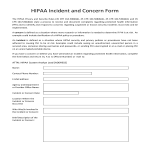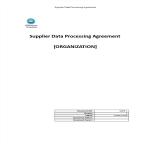Change Management IT Cybersecurity Standard

Opslaan, invullen, afdrukken, klaar!
How to create a Change Management CyberSecurity standard for your organization? Download this IT Security Standard now Standards and control objectives
Vandaag: USD 7.99
Download nu!

Beschikbare bestandsformaten:
.docx- Gevalideerd door een professional
- 100% aanpasbaar
- Taal: English
- Digitale download (76.07 kB)
- Na betaling ontvangt u direct de download link
- We raden aan dit bestand op uw computer te downloaden.
informatie Technologie Verandermanagement
How to create a Change Management CyberSecurity standard for your organization? Download this IT Security Standard for Change Management if you are working on IEC, NIST, ISO27001:2013, or other IT and CyberSecurity Standards and control objectives.
Change Management is an essential IT Service Management discipline, which ensures that changes to services and configuration items are documented, approved, and implemented in a planned and controlled manner. Change Management enables beneficial changes while minimizing disruption to IT Services.
The company utilizes the IT Service Management framework aligned to ITIL, to provide a process-driven approach to the management and delivery of IT Services. Any change to Company production information systems including changes to hardware (servers, storage, network components etc.) and software (operating system, database, application code, configurations etc.) may introduce security risks to the Company's environment. The purpose of this Standard is to ensure that Requests for Changes (RFCs), handled through the Company's Change Management Process are assessed for potential information security risks.
Appropriate data security controls reduce the likelihood (and impact) of data breach incidents during various phases of the data lifecycle. The purpose of this standard is to set out the rules for securing the companies' data during transmission and storage. This document provides best practice recommendations on information security management for use by those responsible for initiating, implementing or maintaining information security management systems (ISMS).
Nowadays, with the digitalization of our society, the need for data protection became more important. The latest IT Security Standards involve the application of technology to broader social and institutional contexts, and thereby contributes to the servitization of companies, and affects how they compete and interact. This document contains security technology solutions to protect data classified as “Highly Sensitive”, “Sensitive”, “Private” or “Public” as per the Data Classification Standard and Data Handling Guidelines. Specifically:
- Cryptography – Encryption and hashing solutions for protecting sensitive data when in transit or storage, and
- Data Masking – Data masking is a technology for obscuring sensitive information in non-production environments. Through data masking [Company Name] protects the content of sensitive data in non-production environments to ensure that:
- Application developers, testers, privileged users and outsourcing vendors do not have unauthorized access to such information.
- The data maintains the referential integrity of the original production data.
Download this Change Management IT Cybersecurity Standard now. Besides this document, make sure to have a look at the IT Security Roadmap for proper implementation and this fit-for-purpose IT Security Kit here with over 40 useful templates. The document(s) are easy to modify and can be downloaded directly after purchase.
DISCLAIMER
Hoewel all content met de grootste zorg is gecreërd, kan niets op deze pagina direct worden aangenomen als juridisch advies, noch is er een advocaat-client relatie van toepassing.
Laat een antwoord achter. Als u nog vragen of opmerkingen hebt, kunt u deze hieronder plaatsen.


